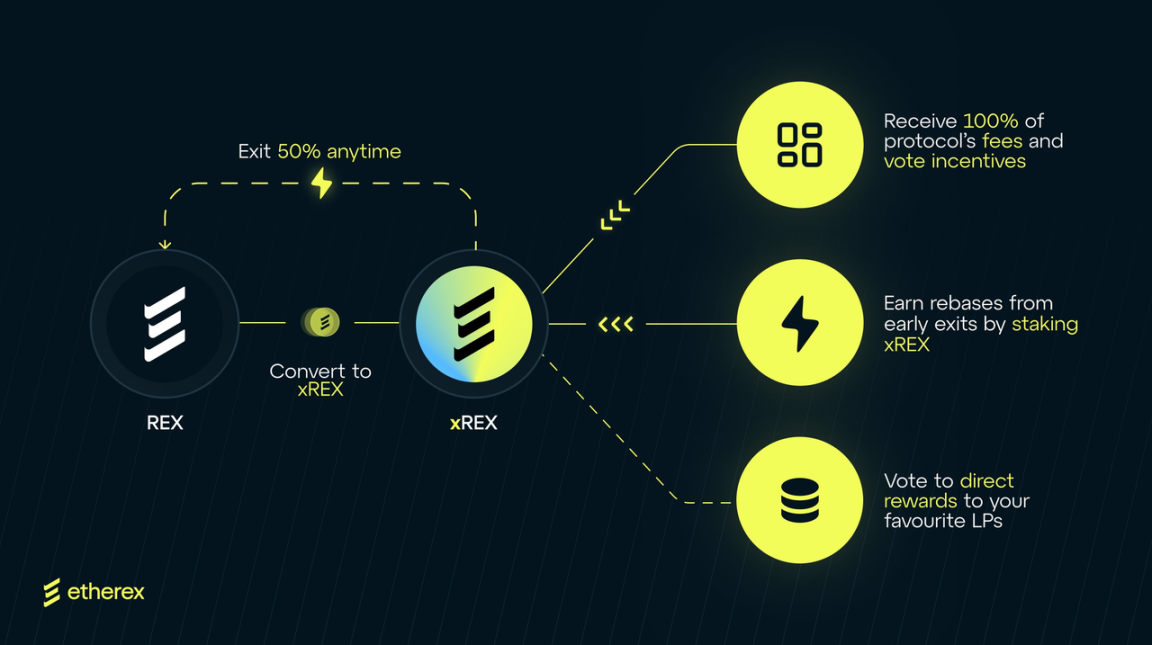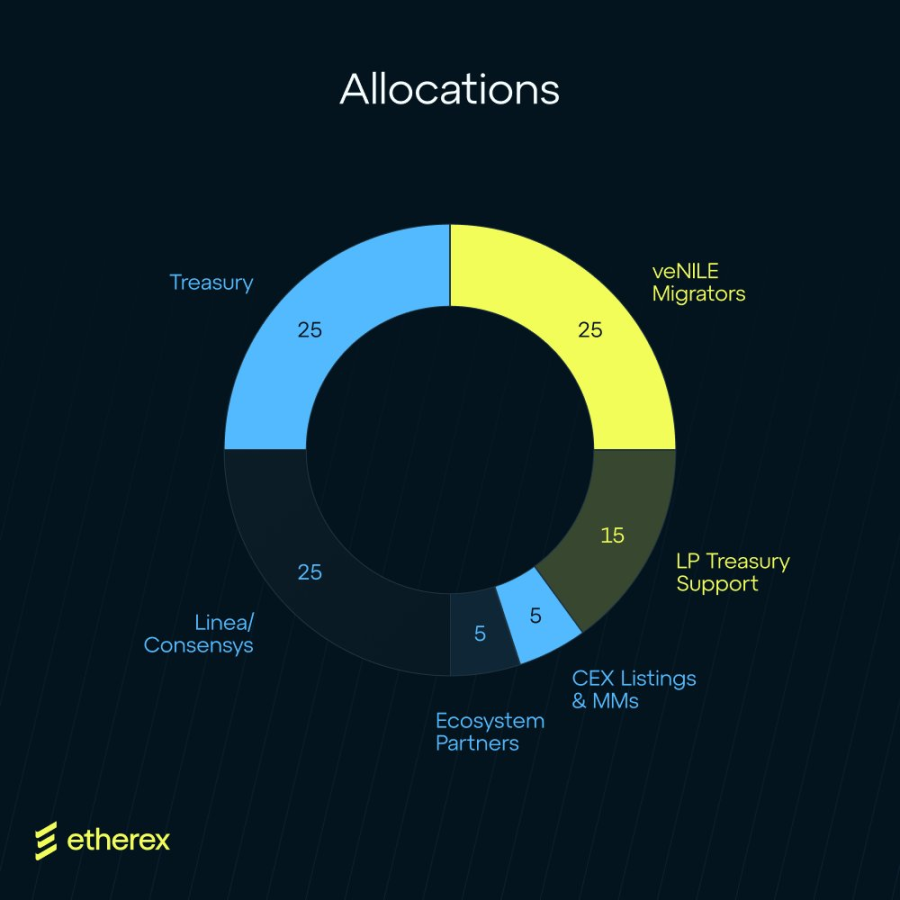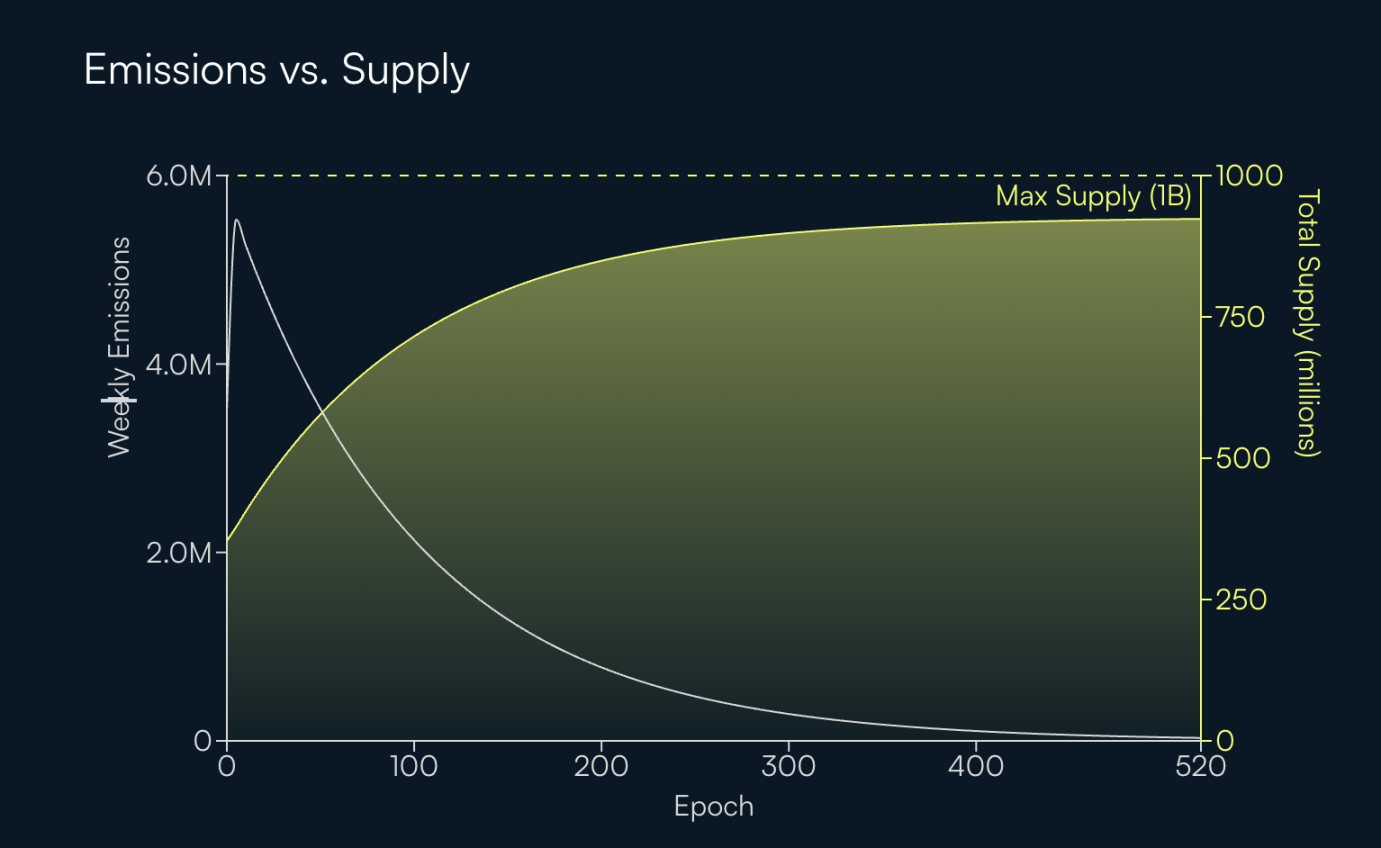Author: KarenZ, Foresight News
This article was first published on July 29
Original title: "Can Etherex Fire the First Shot Before Linea Issues Its Token?"
With Linea announcing the LINEA token economics and governance details at the end of July, its DEX Nile is also undergoing significant upgrades.
The Linea mainnet has always lacked a trading layer that can support full-chain liquidity while returning value to the community. The upgraded version of NILE—Etherex—aims to fill the gaps in exit mechanisms, efficient liquidity aggregation, and incentive mechanism design within the Linea ecosystem.
Etherex adopts a brand-new x(3,3) model, which is more flexible than ve(3,3) and removes the locking requirement. Through dynamic incentives and exit penalty mechanisms, it ensures that the protocol's value flows to the most active participants.
This article will analyze the core mechanisms, token economics, and innovations of Etherex.
From Nile to Etherex
Etherex is a decentralized exchange launched in collaboration with Linea, ConsenSys, and NILE, officially going live on July 29, 2025. Partners include Astera, Foxy, eFrogs, MYX, MetaMask, Alchemix, Frax, Zerolend, and Turtle.
According to the Etherex team, as early as 2014, before the Ethereum mainnet was launched, Ethereum builders like Vitalik Buterin and Joseph Lubin envisioned a decentralized exchange. They aimed to create a truly trustless, secure, and reliable decentralized trading platform that would allow users to trade freely on-chain without relying on centralized entities. EtherEX was born from this vision. Although this concept was not realized at the time, today's Etherex pays tribute to that early vision and innovates upon it. Etherex believes it is not just a DEX in a new bottle but the "ultimate delivery" of the 2014 EtherEX vision.
From a practical perspective, Etherex is an upgraded version of Nile on Linea. As Linea's native liquidity hub, Etherex serves three core functions: targeted incentive distribution, LINEA token liquidity support, and guiding valuable token issuance to trading pools that benefit the overall health of the ecosystem.
What is Etherex?
The core of Etherex lies in its innovative x(3,3) model, which is an evolution of the traditional metaDEX model, addressing the previous challenges of aligning incentive mechanisms.
Traditional metaDEX validated the possibility of large-scale applications and sustainable returns but always relied on artificial constraints like "mandatory locking" to maintain user participation—users had to lock their tokens for years to participate fairly in the ecosystem, creating a participation model driven by "obligation" rather than "value."
The x(3,3) model changes this logic: it does not rely on mandatory locking but instead uses organic incentives to encourage users to stay in the ecosystem—rewarding active participants and naturally concentrating value among the most contributing users. Users can participate without locking their tokens, and the design of the exit mechanism ensures that only those who truly recognize the protocol's value will remain, forming a self-selecting active community.
How does Etherex operate?
As mentioned earlier, Etherex's breakthrough lies in transforming "mandatory participation" into "active retention and contribution," with the core goal of providing native deep liquidity for Linea, optimizing incentives, and achieving a seamless user experience.
How does the three-token system achieve incentive alignment?
Before exploring Etherex's operational mechanisms, it is essential to understand its three-token system.
Etherex employs an innovative three-token system designed to achieve precise alignment of incentive mechanisms while maintaining flexibility. Although specific details have not been fully disclosed, the core logic is already clear:
- xREX: Governance token, where active stakers of xREX have voting rights to decide the distribution of liquidity pool issuance, while also receiving 100% of trading fees, Exit Rebase rewards, and additional rewards provided by the protocol.
- REX33: The liquid staking token for xREX, featuring automatic voting and yield compounding functions. It addresses the liquidity challenge of governance tokens, with an initial ratio of REX33:xREX set at 1:1. As fees, voting incentives, and Rebase rewards accumulate, the ratio will grow in favor of REX33. Additionally, Etherex will ensure through an arbitrage mechanism that REX33 does not fall below the redemption floor price of xREX, providing users with a low-friction participation method.
- REX: The protocol's base token, distributed to liquidity pools through issuance, serving as the core tool for incentivizing liquidity providers. The issuance amount is determined by votes from xREX holders, ensuring resources flow to the most valuable liquidity pools.
Etherex's operational mechanisms
1. Positive cycle of the exit mechanism
Users can exit xREX in two ways: one is direct redemption (Exit Rebase), which incurs a 50% penalty, with the penalty tokens distributed entirely to existing xREX holders; the other is trading through REX33 (the liquid staking version of xREX) on the open market. This not only resolves the token dilution issue but also incentivizes users to participate long-term, forming an ecosystem of "survival of the fittest."
2. Weekly Epoch: xREX holders vote to decide which liquidity pools receive the next week's REX issuance
Every Thursday at 08:00, xREX holders vote to determine which liquidity pools will receive the next week's REX issuance. Voting weight depends on the amount of xREX held and participation level, with pools receiving more emissions based on higher votes.
3. Dynamic fees and revenue distribution
Etherex automatically adjusts transaction fees (0.05%-5%) based on market volatility and trading volume, distributing 100% of protocol fees to xREX holders. Fees generated from trading pairs attract more votes and token releases, leading to deeper liquidity, higher trading volumes, and fees, creating a positive flywheel.
4. Concentrated liquidity (CL) optimization
- LPs can customize price ranges to provide liquidity, maximizing capital efficiency.
- Through competitive farming, LPs are incentivized to optimize liquidity ranges, enhancing trade execution quality.
5. MEV protection and value recirculation
An integrated MEV capture module (such as REX33 AMO) distributes arbitrage profits to voters.

Etherex Token Economics
Etherex will launch its token REX on August 6. The initial total supply of REX is 350 million tokens, with a maximum supply cap of 1 billion tokens. The specific distribution is as follows:
- 25% allocated to Linea/Consensys (80% xREX, 20% REX. Existing veNILE holders can migrate to xREX but must meet: minimum 100 veNILE, 4-year lock-up period. Snapshot time: July 26, 11:59 AM Beijing time).
- 25% allocated to veNILE migrants (100% xREX).
- 25% allocated to the protocol treasury.
- 15% for LP treasury support.
- 5% for centralized exchanges and market makers.
- 5% allocated to ecosystem partners.
Except for the tokens allocated for LP treasury support and CEX listing/market makers, most token distributions will be in the form of xREX.

As mentioned earlier, xREX holders vote to decide which liquidity pools will receive the next week's REX issuance. Below is an approximation of Etherex's weekly emission (the white curve in the chart) compared to the total supply over the first 500 Epochs (approximately 10 years, represented by the yellow curve). During Epoch 0, 3.5 million tokens are released, and from Epochs 1 to 4, each Epoch first increases by 20%, then by 10%. After Epoch 5, each Epoch will decay by 1%.

Why is Etherex a key piece of the Linea ecosystem puzzle?
The emergence of Etherex brings several core values to the Linea ecosystem:
First, it addresses the fundamental issue of liquidity incentives through the x(3,3) model—transforming "mandatory participation" into "value-driven participation," allowing liquidity to flow naturally to the most efficient areas while protecting the interests of long-term participants through the Exit Rebase mechanism.
Second, Etherex significantly lowers the participation threshold for users and liquidity providers through deep integration with MetaMask and a no-locking design, injecting a broader user base into the Linea ecosystem.
Additionally, as Linea's native liquidity hub, Etherex achieves value synergy with the Ethereum ecosystem—its incentive mechanism design not only serves Linea's short-term growth but also focuses on the long-term goal of Ethereum becoming a key component of the economy.
It is also worth noting that the Ethereum treasury company SharpLink currently holds over 360,000 ETH, with Ethereum co-founder and Consensys CEO Joseph Lubin serving as the chairman of the SharpLink Gaming board. Community users speculate that SharpLink may place part of its ETH holdings in Etherex.
With its innovative x(3,3) model, coordinated token economics, and seamless user experience, whether Etherex can become the core engine driving the explosion of the Linea ecosystem remains to be seen.
Click to learn about job openings at ChainCatcher
免责声明:本文章仅代表作者个人观点,不代表本平台的立场和观点。本文章仅供信息分享,不构成对任何人的任何投资建议。用户与作者之间的任何争议,与本平台无关。如网页中刊载的文章或图片涉及侵权,请提供相关的权利证明和身份证明发送邮件到support@aicoin.com,本平台相关工作人员将会进行核查。




